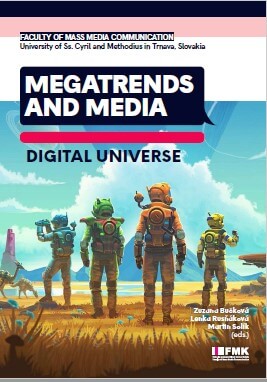LINGUISTIC AND DISCURSIVE MEANS OF DISTORTING INFORMATION
LINGUISTIC AND DISCURSIVE MEANS OF DISTORTING INFORMATION
Author(s): Maksym KushnirovSubject(s): Media studies, Theoretical Linguistics, Politics and communication, Theory of Communication
Published by: Univerzita sv. Cyrila a Metoda v Trnave, Fakulta masmediálnej komunikácie
Keywords: discourse analysis; discourse markers; discursive means; distorting information; linguistic means; media discourse; Overton window; political discourse; vantage theory;
Summary/Abstract: The aim of this paper is to systemise the most frequently encountered linguistic and discursive means of distorting information that appear in the texts of political media discourse. Conducting linguistic analysis of media discourse texts as a tool of distorting information presupposes identification of the corresponding linguistic means at all hierarchical levels of language structure, discursive means, application of the various linguistic and interdisciplinary discourse theories, etc. Among the linguistic and discursive means that are used with the purpose of distorting information, are various expressive means, stylistic devices, discourse markers, etc. The most frequent stylistic devices include euphemisms, hyperbole, etc. There are certain grammar and syntactic structures that mostly appear in mass media. Application of the categorisation‑oriented vantage theory and the Overton window or window of discourse is also effective. These and numerous other linguistic and discursive means may be used with the purpose of the facts contortion and influencing the addressee’s point of view. They are analysed when studying the pragmatic potential of media discourse texts. The findings of the study could be of value to linguists, political analysts, media analysts, sociologists and general public.
Journal: Megatrendy a médiá
- Issue Year: 6/2019
- Issue No: 1
- Page Range: 208-216
- Page Count: 9
- Language: English

